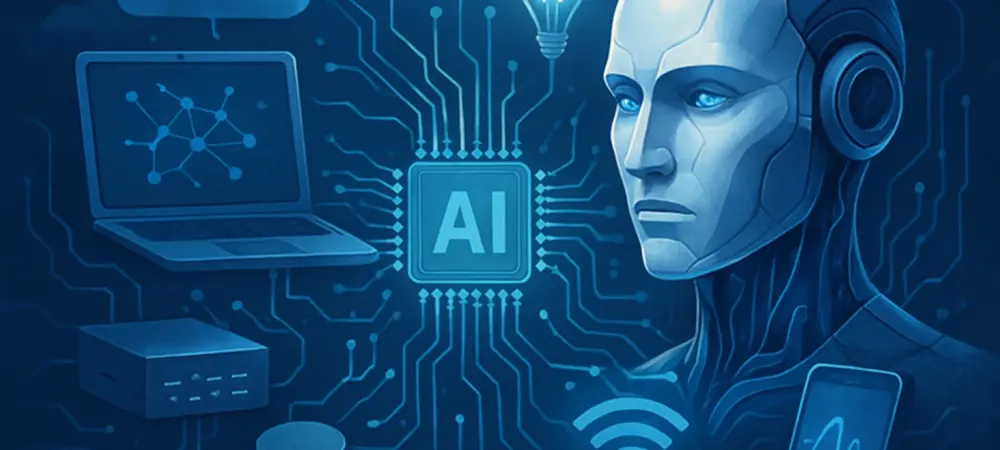In a tech landscape where innovation is often driven by the smallest players, consider the impact of a community of over 33 million developers tinkering with programmable circuit boards to create everything from simple gadgets to complex robotics. This is the world of Arduino, an Italian open-source hardware and software company, which has now caught the eye of Qualcomm, a giant in mobile and semiconductor technology. This acquisition marks a significant pivot for Qualcomm as it seeks to deepen its influence in artificial intelligence (AI) and the Internet of Things (IoT), bridging grassroots innovation with enterprise ambitions. The deal, with financial terms undisclosed, positions Qualcomm to tap into a vibrant developer ecosystem while expanding its technological footprint.
Strategic Importance of Arduino in Qualcomm’s Vision
Arduino’s appeal lies in its massive user base, ranging from hobbyists to startups, who use its accessible tools for prototyping rather than mass production. By bringing Arduino into its fold as an independent subsidiary, Qualcomm gains direct access to this creative community, offering a unique opportunity to shape emerging tech trends. This move is not merely about acquiring a company but about embedding Qualcomm’s advanced AI and IoT chipsets into the hands of early-stage innovators who could define future applications.
Beyond the numbers, Arduino carries a strong brand reputation in the maker and robotics sectors, a point often highlighted by industry analysts. This trust provides Qualcomm with a platform to foster new use cases, from smart home devices to experimental robotics, driven by grassroots efforts. The synergy between Arduino’s community-driven ethos and Qualcomm’s technological prowess could spark innovation in ways that larger, more rigid corporate structures often struggle to achieve.
Qualcomm’s Dual Approach to AI Dominance
Qualcomm’s ambitions in AI extend far beyond the maker space, as evidenced by its concurrent $2.4 billion acquisition of Alphawave, a U.K.-based semiconductor firm focused on data center AI infrastructure. This dual strategy targets both ends of the spectrum: grassroots innovation through Arduino and high-stakes enterprise solutions via Alphawave. The approach aims to cover the full AI ecosystem, from edge devices in personal projects to massive computational needs in corporate settings.
In the competitive data center AI market, dominated by giants like Nvidia and AMD, Alphawave offers Qualcomm a foothold, though not an immediate lead. Industry observers suggest that simplifying AI deployment for enterprise clients could be a game-changer, allowing Qualcomm to carve out market share. This contrasts with the Arduino acquisition, which focuses on influencing smaller-scale, yet potentially disruptive, innovations at the edge of technology.
Industry Dynamics and External Pressures
The broader tech industry is witnessing a wave of diversification, with companies expanding into AI and IoT to stay relevant amid rapid advancements. Qualcomm’s acquisitions reflect a response to this trend, aiming to build a comprehensive presence across consumer and enterprise segments. The push toward integrating AI into diverse applications, from personal devices to industrial systems, underscores the urgency of such strategic moves.
Additionally, external factors, such as U.S. policymakers’ emphasis on strengthening domestic AI supply chains, align with Qualcomm’s current trajectory. By investing in both Arduino’s developer community and Alphawave’s infrastructure capabilities, Qualcomm positions itself as a key player in addressing national priorities. This alignment could provide a competitive edge, especially as global tech rivalries intensify over the next few years, from 2025 onward.
Practical Applications and Real-World Impact
The integration of Arduino’s platform with Qualcomm’s technology opens up a range of practical applications, particularly in IoT and robotics. Hobbyists and small developers could use Qualcomm-enhanced Arduino boards to prototype smart sensors or autonomous systems, accelerating innovation in everyday tech. These small-scale projects often serve as testing grounds for ideas that later scale into commercial products.
On the enterprise side, Alphawave’s expertise in data center AI could support high-end infrastructure needs, such as powering cloud-based AI models for industries like healthcare or logistics. Qualcomm’s ability to bridge these two worlds—connecting grassroots prototypes with enterprise-grade solutions—creates a unique pipeline for innovation. This could lead to breakthroughs in how AI is deployed across different scales and sectors.
Challenges in Balancing Innovation and Scale
Despite the promise, integrating Arduino as an independent entity while aligning it with Qualcomm’s broader goals presents hurdles. Maintaining Arduino’s open-source ethos and community trust, while pushing Qualcomm’s proprietary technologies, requires delicate navigation. Any misstep could alienate the very developers Qualcomm seeks to engage.
Moreover, the enterprise AI market poses its own challenges, with fierce competition from established players and high technical barriers. The robotics sector, though full of potential, remains fragmented, making it difficult to standardize solutions or predict market trajectories. Qualcomm must also balance its focus between nurturing small-scale creativity and meeting the demanding expectations of large-scale corporate clients.
Verdict on Qualcomm’s Ambitious Strategy
Reflecting on Qualcomm’s acquisition of Arduino and Alphawave, it becomes clear that the company has taken bold steps to position itself across the AI and IoT spectrum. The strategic foresight in targeting both grassroots developers and enterprise infrastructure showcases a nuanced understanding of the tech landscape’s diversity. These moves have laid a foundation for influence in varied markets, even as integration challenges persist. Looking ahead, Qualcomm needs to prioritize fostering Arduino’s community trust by ensuring open access to tools while gradually introducing its chipsets for broader adoption. Simultaneously, refining Alphawave’s offerings to simplify enterprise AI deployment could solidify market gains. By maintaining this dual focus, Qualcomm has the potential to drive innovation from the ground up and the top down, shaping the next wave of technological advancements.

